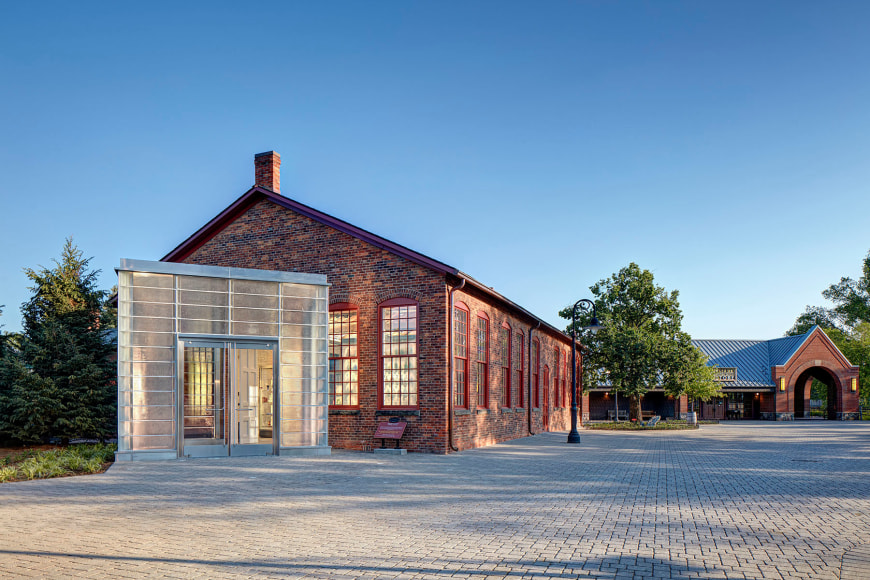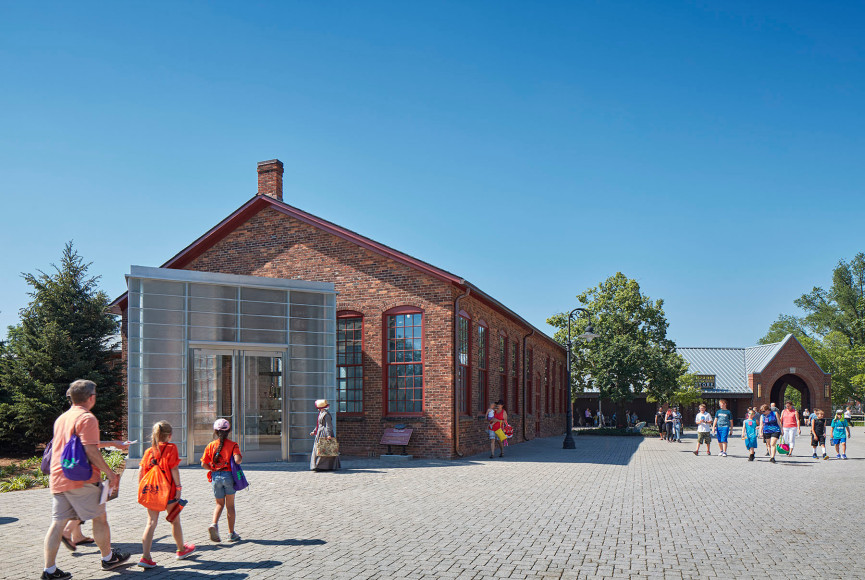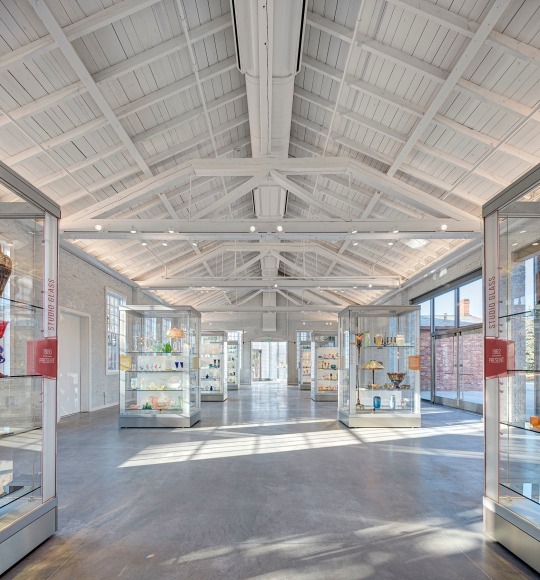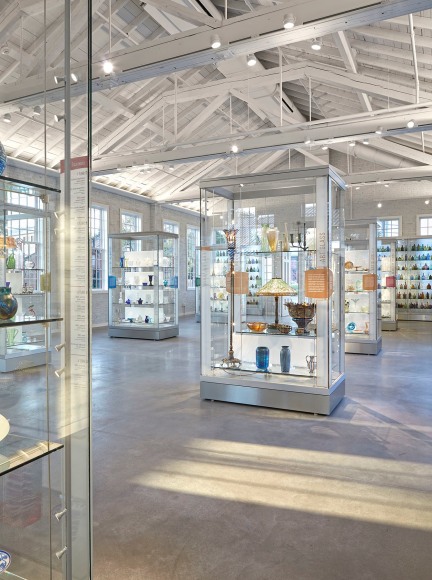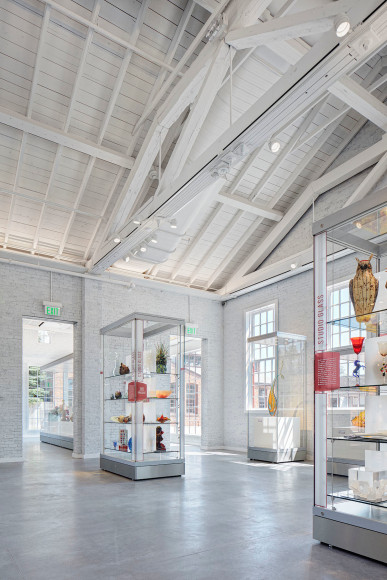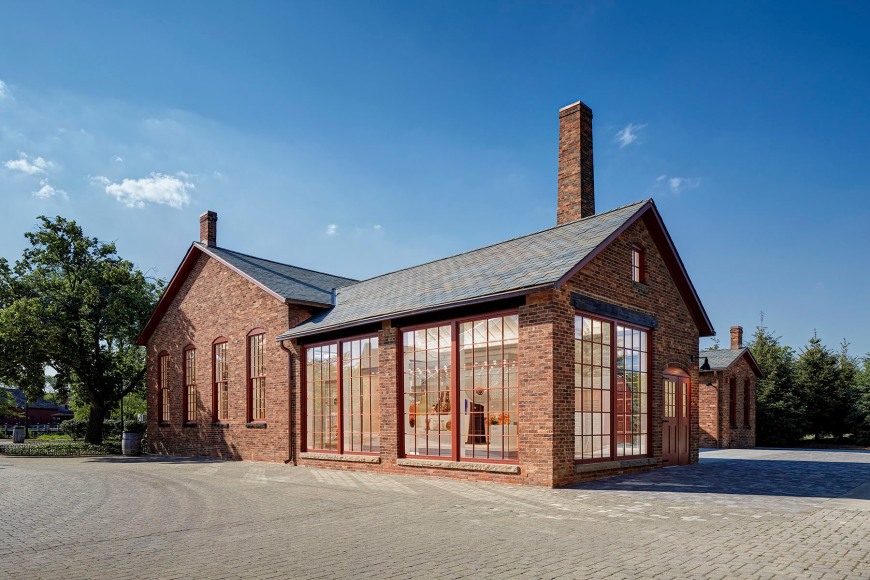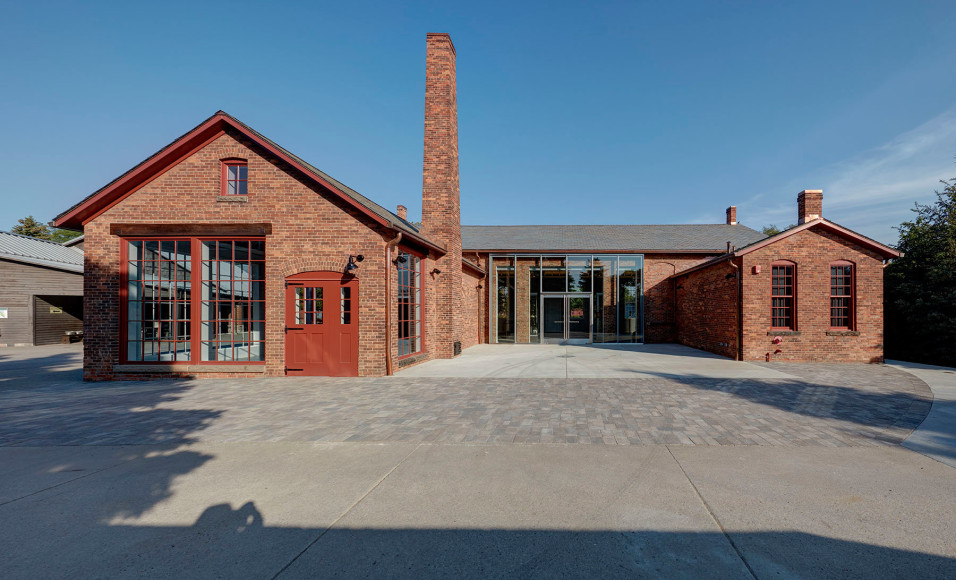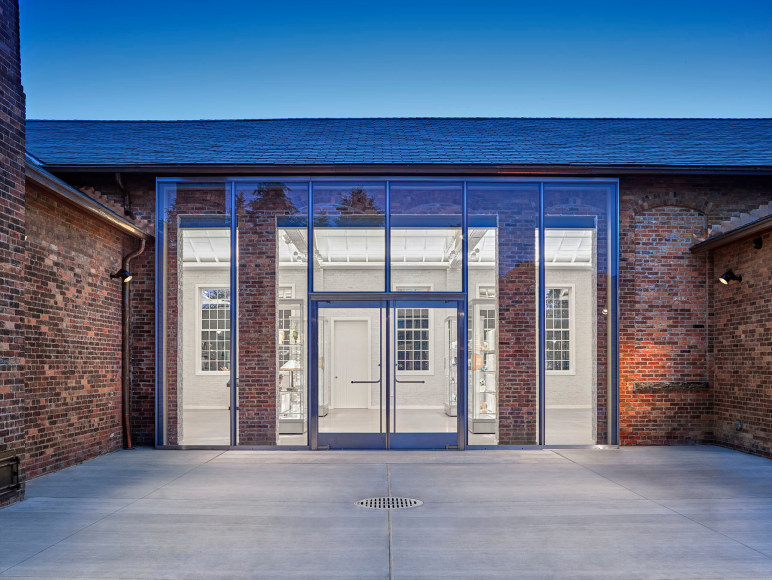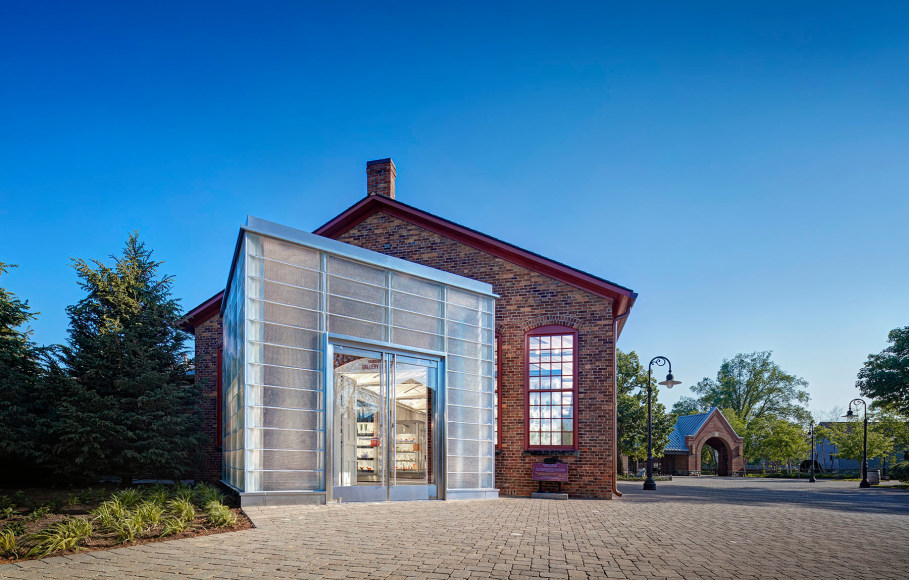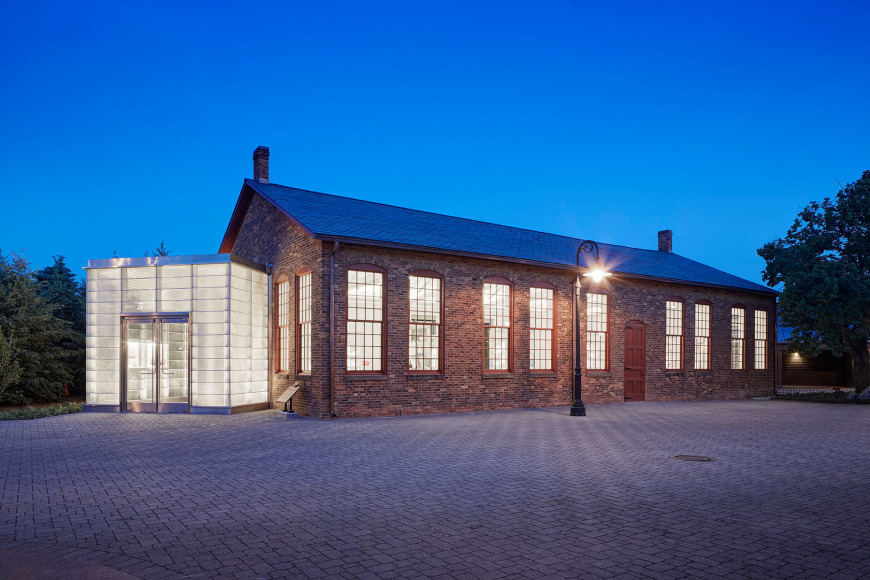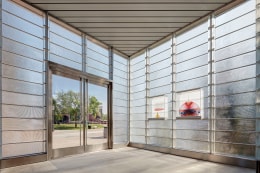In its merging of performance and aesthetics, the gallery embodies the collection's unique combination of industry and art.
DAVIDSON-GERSON GALLERY OF GLASS
DEARBORN, USA
2017
BackImages
Description
As part of his encyclopedic collection of American industry and ingenuity, Henry Ford transported this machine shop from New England to this site within the Liberty Craftworks at Greenfield Village, where it houses the museum’s glass gallery. JCDA’s renewal of the building articulates the site, connecting the gallery entrance to the hot shop by rotating the vestibule to face it.
Embodying the recently expanded collection’s combination of art glass and industrial glass, the vestibule’s large structural glass castings reference the building’s masonry structure and use of optical glass commonly used in the 19th century, such as Luxfer sidewalk prisms and glass roof tiles such as the ones at Thomas Edison’s Menlo Park Glass House, located in the Greenfield Village.
The gallery’s blend of art, science, and technological innovation embraces the notion of glass as a medium for creative expression allied with the most cutting-edge developments in industry and academic research.
Client: Henry Ford Museum
Architect: Quinn Evans
